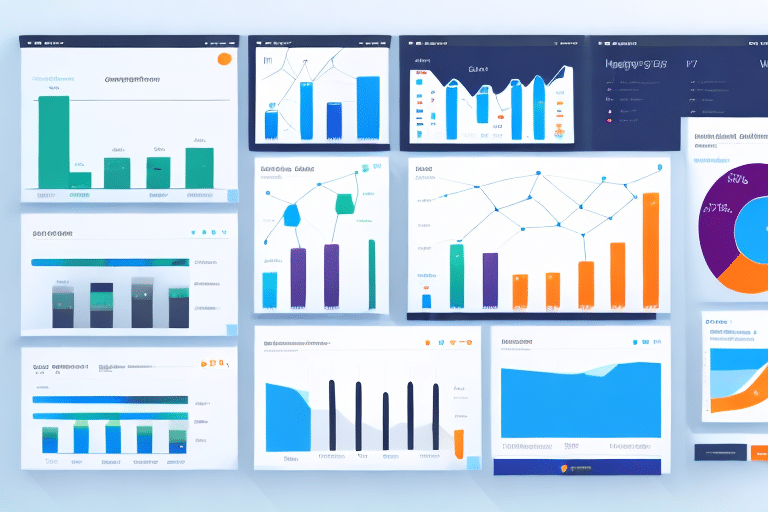Understanding Exit Pages in E-Commerce
In the competitive world of e-commerce, understanding where and why visitors leave your site is crucial for optimizing user experience and increasing conversions. Exit pages, the last pages users visit before leaving your website, can provide valuable insights into potential issues with your site's design, navigation, content, or overall user experience.
The Importance of Analyzing Exit Pages
Identifying Problematic Areas
Exit pages help e-commerce operators pinpoint specific pages that may be causing users to abandon their visits. By analyzing these pages, you can uncover common patterns and address issues proactively, enhancing the overall functionality of your website.
Reducing Bounce Rates
A high bounce rate indicates that visitors leave your site without interacting with it, which can negatively impact your search engine rankings. By identifying and improving pages with high bounce rates, you can encourage users to stay longer and engage more with your content.
Optimizing Conversion Rates
Exit pages are directly linked to conversion rates. For instance, if users frequently leave from the checkout page, it may suggest that the checkout process is too complicated or lacks sufficient payment options. Addressing these barriers can lead to higher conversion rates.
Key Exit Pages in E-Commerce
Common Top Exit Pages
- Cart Page
- Checkout Page
- Shipping Information Page
- Product Pages
While some top exit pages, like a thank you page, are expected to have high exit rates, others indicate areas needing improvement. Regular monitoring helps differentiate between beneficial exits and problematic ones.
Identifying Your Top Exit Pages
Using Google Analytics
To identify top exit pages, navigate to Behavior > Site Content > Exit Pages in Google Analytics. This section provides a list of pages with high exit rates, allowing you to focus your optimization efforts where they are most needed.
Analyzing Exit Page Data
Compare exit pages against overall site traffic to determine which pages have disproportionately high exit rates. This comparison helps prioritize which pages to optimize first for better results.
Strategies to Improve Top Exit Pages
Simplify the Checkout Process
A complicated checkout process is a common reason for high exit rates. Simplifying steps and reducing the amount of required information can significantly decrease abandonment rates.
Enhance Site Security
Ensuring your site’s security can build trust with users, making them more likely to complete their purchases. Displaying security badges and using secure payment gateways are effective strategies.
Improve Content and Design
High-quality product descriptions and images are essential. Additionally, a user-friendly design that is easy to navigate can keep visitors engaged and reduce the likelihood of them leaving your site prematurely.
Analyzing User Behavior on Exit Pages
Utilizing Heat Maps
Heat maps provide visual insights into where users are clicking and scrolling on your pages. Tools like Hotjar and Crazy Egg can help you understand user interactions and identify areas that need improvement.
Understanding User Intent
By analyzing how users interact with exit pages, you can gain a deeper understanding of their intent. This knowledge allows you to tailor your content and design to better meet their needs and expectations.
Addressing Common Reasons for High Exit Rates
Unexpected Shipping Fees
Surprising users with high shipping costs can lead to cart abandonment. Clearly displaying shipping fees early in the purchasing process can mitigate this issue.
Limited Payment Options
Offering a variety of payment methods can cater to a broader audience, reducing the chances of users leaving your site due to a lack of preferred payment options.
Non-Mobile-Friendly Layouts
With the increasing use of mobile devices for online shopping, having a responsive design is essential. A non-optimized mobile experience can drive users away.
Leveraging Analytics for Continuous Improvement
Key Metrics to Monitor
- Time Spent on Page
- Bounce Rate
- Exit Rate
- Conversion Rate
Monitoring these metrics using tools like Google Analytics helps you track the effectiveness of your optimization strategies and make data-driven decisions.
Implementing A/B Testing
A/B testing different versions of exit pages can help determine what changes lead to better user engagement and higher conversion rates. Tools like Optimizely facilitate effective A/B testing.
Enhancing User Experience to Boost Conversions
Effective Calls-to-Action (CTAs)
Well-designed CTAs can guide users towards desired actions. Ensure your CTAs are clear, concise, and prominently displayed to encourage user engagement.
Responsive Design and Mobile Optimization
Ensuring your website is fully responsive and optimized for mobile devices enhances the user experience, reducing the likelihood of users leaving due to poor mobile functionality.
Retargeting Strategies to Re-Engage Users
Implementing Retargeting Campaigns
Retargeting allows you to reach out to users who have left your site without converting. Platforms like Google Ads and Facebook Retargeting can help you create targeted ads that bring users back to complete their purchases.
Personalized Marketing
Using data to create personalized marketing messages increases the likelihood of re-engaging users and driving them back to your site.
Conclusion
Understanding and optimizing exit pages is essential for e-commerce success. By leveraging data analytics, improving user experience, and implementing effective retargeting strategies, you can reduce exit rates and enhance your site's performance. Continuously monitoring and addressing the factors that lead users to leave your site will contribute to higher conversion rates and increased revenue.






















